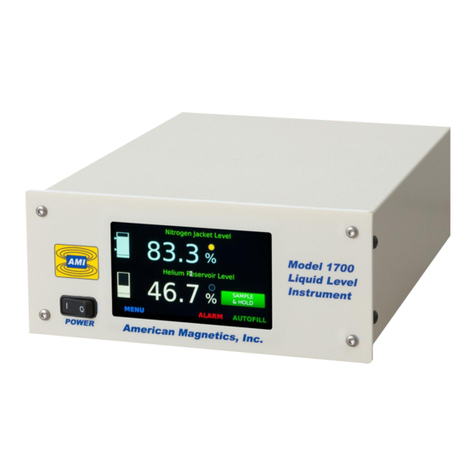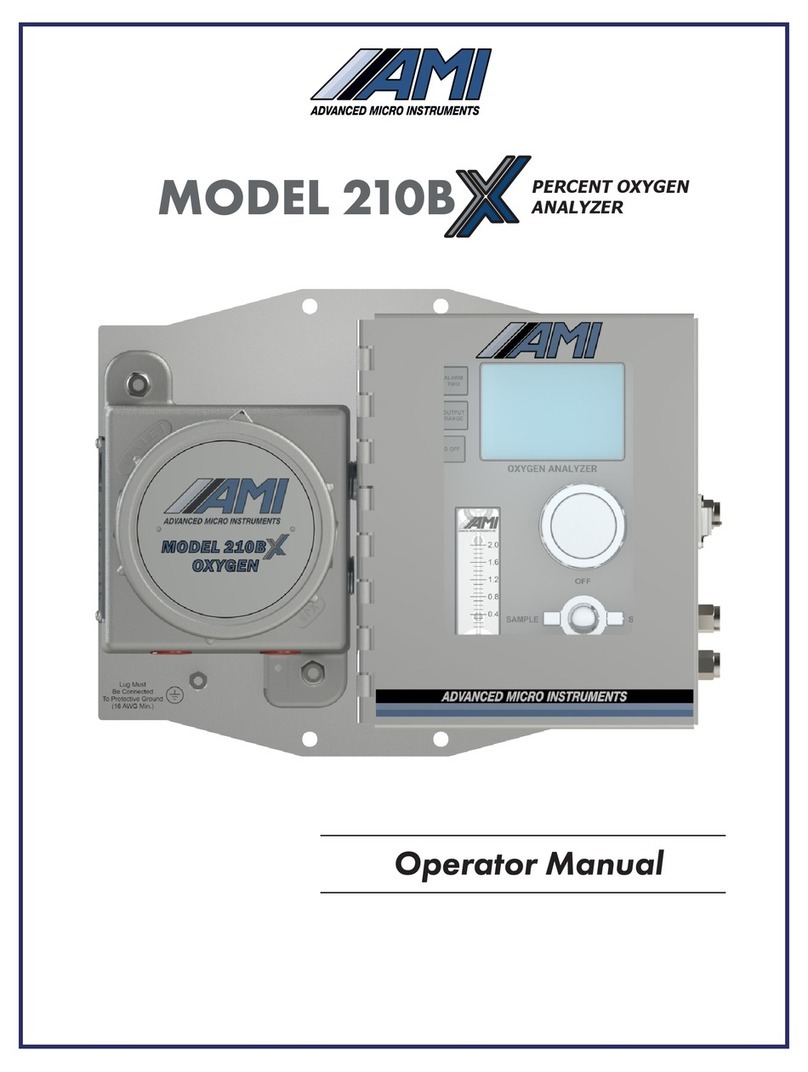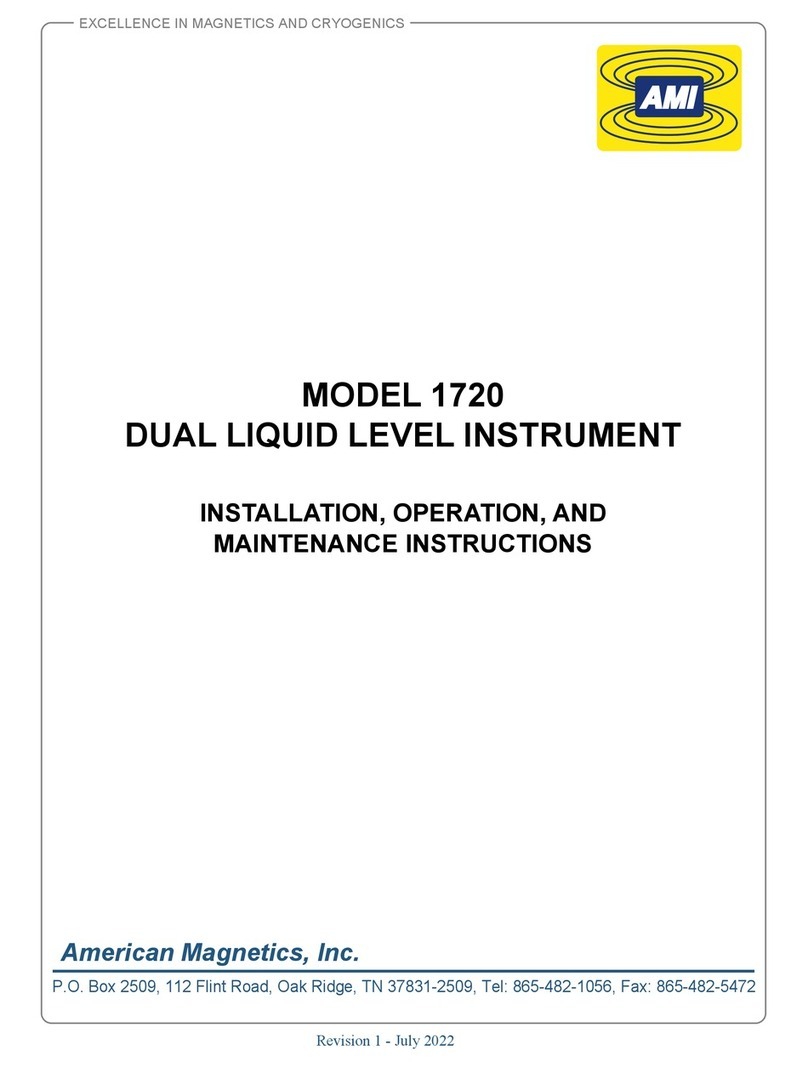
AMI Analyzer Manual 6
oxygen present, and has zero output in the absence of oxygen, thus avoiding any requirement to zero the
analyzer. The cell is almost linear throughout its range, and a built-in microprocessor corrects the residual
non-linearity to better than 0.1%. The span calibration may be performed using standard span gases or
ambient air, but the sensor is so stable that calibration is ordinarily not necessary.
Percent level analyzers are routinely calibrated on air. Air has a reliable 20.94% oxygen in it, when dry. In
the case of its use as an area monitor it is advisable to use a known high quality air supply for calibration
since the room air may not contain 20.94% of oxygen! High range sensors should be calibrated with a gas
whose concentration is near the top of the range –50% for the 0-50% unit, and 95% for the 0-95% unit.
Gas compatibility
The zirconium oxide sensor operates internally at red heat, with platinum as its electrodes. This means that
any oxidizable gases will react with any oxygen present and burn, reducing the apparent oxygen reading. It
also means that gases which can decompose at high temperatures will do so. In the case of Freons this can
produce hazardous byproducts. It also means that flammable mixtures of gases may be ignited. Sulfur
containing gases and acid gases such as SO2 will degrade the sensor and shorten its life.
DO NOT USE THIS PROBE WITH FLAMMABLE GASES OR HALOGEN CONTAINING
GASES!!
Sensor life
Unlike electrochemical sensors, the model 65 sensor does not degrade when it is not in use. Its life depends
on the total amount of oxygen to which it is exposed, while it is powered up. If it is powered continuously,
and exposed to air, the sensor will remain almost completely stable for about several years, and thereafter
will gradually drop its reading for the next few years. If it is run on an 8 hour duty cycle, it will last three
times as long. If it is run continuously at 5% oxygen, it will last at least 6 years before the sensor starts to
change. If it is run at 5% oxygen on an 8 hour duty cycle, it will last maybe 18 years before the sensor starts
to change.
Sensor Warranty:
The sensor is warranted to operate for at least two years, with an expected life of up to 10 years.
Instrument Warranty:
Any failure of material or workmanship will be repaired free of charge for a period of two years from the
original purchase (shipping date) of the instrument. AMI will also pay for one way shipment (back to the
user).
Any indication of abuse or tampering will void the warranty.




































